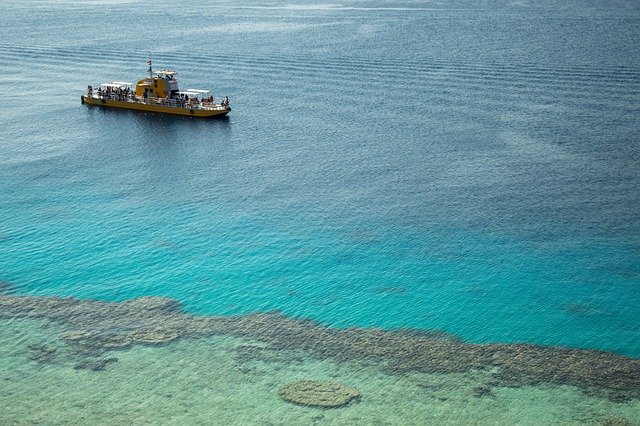Miami to Galápagos Cruise Guide: Routes, Facilities, and Travel Tips
Embarking on a cruise from Miami to the Galápagos Islands offers an extraordinary journey through some of the world's most pristine waters. This unique expedition combines the convenience of departing from a major U.S. port with the adventure of exploring one of Earth's most remarkable natural laboratories. Understanding the logistics, preparation requirements, and what to expect can help ensure your voyage becomes an unforgettable experience.

Overview of Travel Routes from Miami to the Galápagos Islands
Cruise routes from Miami to the Galápagos Islands typically involve a multi-leg journey rather than direct passage. Most itineraries include stops in the Caribbean before crossing into South American waters, often with ports of call in Colombia or Ecuador. The journey generally takes 10-14 days one way, depending on the specific route and weather conditions. Some cruise lines offer repositioning cruises that combine this route with other destinations, creating longer voyages of 20-30 days.
The most common routing involves sailing south through the Caribbean Sea, passing through the Panama Canal, and then continuing along the Pacific coast of South America before reaching the Galápagos archipelago. Alternative routes may include stops in Central American ports such as Costa Rica or Panama before the final leg to Ecuador’s famous islands.
Onboard Facilities Suited for Expedition-Style Cruising
Expedition cruises to the Galápagos require specialized onboard facilities that differ significantly from traditional cruise ships. These vessels typically feature zodiac landing craft for shore excursions, underwater viewing areas, and dedicated spaces for naturalist presentations. Educational facilities include lecture halls, libraries with natural history resources, and observation decks equipped with high-quality binoculars and telescopes.
Dining facilities on expedition ships focus on fresh, locally-sourced ingredients when possible, with menus designed to accommodate various dietary restrictions. Fitness facilities are usually compact but functional, often including equipment suitable for maintaining fitness during longer sea days. Medical facilities are particularly important on these remote voyages, typically staffed by qualified medical professionals and equipped to handle common health issues that may arise during the journey.
Medical and Vaccination Recommendations for Travelers
Travelers planning a Miami to Galápagos cruise should consult with a travel medicine specialist at least 4-6 weeks before departure. While no specific vaccinations are required for entry to the Galápagos, routine immunizations should be current, including measles-mumps-rubella, diphtheria-tetanus-pertussis, varicella, polio, and yearly flu shots.
Depending on planned activities and ports of call, additional vaccines may be recommended, such as hepatitis A and B, typhoid, and yellow fever. Travelers should bring adequate supplies of prescription medications, as pharmacies may be limited or unavailable during the voyage. Sun protection is crucial due to the equatorial location, requiring high-SPF sunscreen, protective clothing, and wide-brimmed hats.
This article is for informational purposes only and should not be considered medical advice. Please consult a qualified healthcare professional for personalized guidance and treatment.
Best Travel Seasons for Galápagos Exploration
The Galápagos Islands can be visited year-round, but different seasons offer distinct advantages for cruise travelers. The warm season from December to May brings calmer seas, warmer water temperatures ideal for swimming and snorkeling, and increased wildlife activity including sea turtle nesting and marine iguana breeding.
The cool season from June to November features rougher seas but excellent wildlife viewing opportunities, including whale migrations and increased bird activity. This period also offers better underwater visibility for diving enthusiasts. Weather patterns can affect cruise schedules, with the warm season generally providing more predictable conditions for departure from Miami and smoother sailing through Caribbean waters.
Cruise Pricing and Provider Comparison
Several cruise lines offer repositioning or specialized itineraries from Miami to the Galápagos region, though direct routes are limited. Pricing varies significantly based on cabin category, season, and included amenities.
| Cruise Line | Itinerary Type | Duration | Price Range (per person) |
|---|---|---|---|
| Celebrity Cruises | Repositioning | 14-16 days | $2,500 - $8,000 |
| Holland America | Repositioning | 18-21 days | $3,000 - $10,000 |
| Princess Cruises | South America | 14-20 days | $2,800 - $9,500 |
| Silversea | Expedition | 12-15 days | $8,000 - $25,000 |
Prices, rates, or cost estimates mentioned in this article are based on the latest available information but may change over time. Independent research is advised before making financial decisions.
Post-Cruise Travel Options and Return Routes to Miami
After exploring the Galápagos, travelers have several options for returning to Miami or extending their South American adventure. Many choose to fly from Quito or Guayaquil back to Miami, with several airlines offering direct or one-stop service. This option typically takes 8-12 hours including connections.
Alternatively, some cruise lines offer return voyages to Miami, though these are less frequent and may follow different routes. Extended itineraries might include additional South American ports such as Lima, Peru, or Valparaíso, Chile, before heading north through the Panama Canal back to Florida waters. Land-based extensions in Ecuador, Peru, or other South American countries can be arranged through cruise lines or independent travel agents, allowing travelers to explore Machu Picchu, the Amazon rainforest, or colonial cities before returning home.
The logistics of post-cruise travel should be planned well in advance, particularly during peak travel seasons when flights and accommodations may be limited. Travel insurance is highly recommended for these complex international itineraries, covering potential delays, medical emergencies, and trip interruptions that could affect return travel plans.




